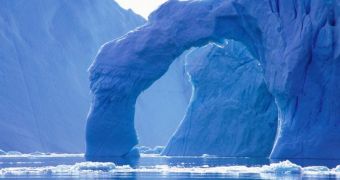On May 1, NASA announced that it was to send its newest rover to Greenland and use it to collect information concerning the ice sheets in this part of the world.
The rover's mission is planned to debut this May 3 and come to an end by June 8.
Throughout this period, the rover is to try to figure out both how these ice sheets are formed, and how fast they are melting as a result of the environmental conditions they are exposed to.
The official NASA website explains that, apart from its being solar-powered and semi-autonomous, the rover is equipped with a ground-penetrating radar that will allow it to gather data about the make-up of Greenland's snow and ice layers.
“A ground-penetrating radar powered by two rechargeable batteries rests on the back of the rover. The radar sends radio wave pulses into the ice sheet, and the waves bounce off buried features, informing researchers about the characteristics of the snow and ice layers,” NASA explains.
At first, the rover will only be allowed to hang around the National Science Foundation's Summit Camp.
Once the researchers conclude that the rover is indeed functioning as it should, it will be sent to explore more remote locations.
While collecting data at considerable distances from the Summit Camp, the rover will be controlled with the help of a satellite.
“GROVER is just like a spacecraft but it has to operate on the ground. It has to survive unattended for months in a hostile environment, with just a few commands to interrogate it and find out its status and give it some directions for how to accommodate situations it finds itself in,” specialist Michael Comberiate said.
By learning more about the make-up and the behavior of ice sheets in Greenland, scientists hope to better understand how global warming is affecting these regions.
The analysis of Greenland's ice sheets should also allow researchers to better predict future sea level rise.

 14 DAY TRIAL //
14 DAY TRIAL //